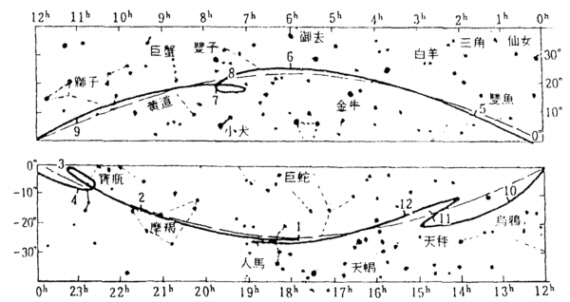Chapter 48 Chapter 13 Planetary Motion and Position Calculation
The apparent motion of planets is very complicated, and there are other strange "movements" besides speed changes.Sometimes it hides behind the sun, which is called upper conjunction; sometimes overlaps in front of the sun, which is called lower conjunction; sometimes it stops moving forward, which is called staying, or even moves in the opposite direction, which is called retrograde.Planets can be divided into two types according to their apparent motion: the inner planets are Venus, Mercury and the outer planets are Mars, Jupiter, and Saturn.Although both inner planets and outer planets have phenomena such as stagnation and retrograde, due to different causes and their own apparent motion characteristics, their differences have been noticed as early as the Han Dynasty.

Figure 15 The causes of the retrograde phenomenon of extraterrestrial planets
The reason for the retrograde phenomenon is to take the extraterrestrial planets as an example (see Figure 15). When the earth walks from E1 to E2, because the extraterrestrial planets move slower than the earth, they only travel less distance from P1 to P2.At this time, viewed from the perspective of the earth, the planet seems to be retrograde from P'1 to P'2 in the background of the starry sky.And because there is an included angle between the orbital plane of the planet and the orbital plane of the earth, the retrograde trajectory and the prograde trajectory do not coincide, and the distance between the planet and the earth from the orbital intersection is always changing, so the apparent motion of the planet presents various forms, as shown in Fig. 16 shows the apparent trajectory of Mercury on the celestial sphere.The ancients paid great attention to the geometric shape of planetary trajectories, and many ancient books have vivid descriptions of it, such as using the shape of willow leaves and the shape of Si to describe the retrograde trajectory.

Figure 16 Mercury's apparent trajectory
Qualitative description is only the initial stage of understanding. During the Qin and Han Dynasties, people began to conduct quantitative research on the apparent motion of planets.

Figure 15 The causes of the retrograde phenomenon of extraterrestrial planets

Figure 16 Mercury's apparent trajectory
